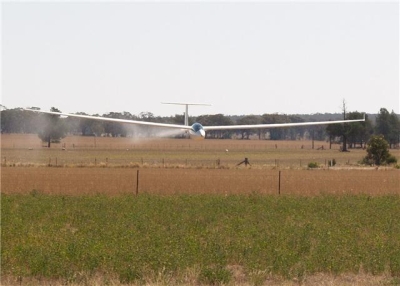Basic Sailplane Aerodynamics - How Gliders Fly
This is the reference page for the "Basic Sailplane Aerodynamics" series of Australian Soaring articles on sailplane and glider aerodynamics, produced by Col Vassarotti.
These are a most valuable gliding and soaring aerodynamics education and training reference for students and experienced pilots alike, available here.
Their scope includes basic aerodynamics of how wings work, lift and drag, controls and their effects, turning, stability, inflight loads, manoeuvring, stalls and spins, ground effect, and many other gems for soaring pilots who seek to improve their understanding and flying skills.
Soaring Flight - The Interaction of Sailplanes and Air
This is a non-technical explanation of how sailplanes interact with air and the aerodynamic forces involved, creating flights of immense speeds, distances and heights, all without engines.
Air viscosity, density and pressure, and how Newton's Laws of Motion, together with drag, thrust and gravity, affect sailplanes are discussed. Wings and how they work are also examined in the light of old and new aerodynamic theory and science.
Click here to read the article.
Lift, Drag and Aerofoils
This Part deals with sailplane wings and aerofoils, lift and drag. Glider aerofoils of various types are described. The way wings actually work to produce lift is examined along with wing concepts such as the boundary layer, laminar flow, centre of pressure, chord, aspect ratio, taper, twist, incidence and wing loading. Induced and profile drag are also covered.
Click here to read the article.
Stability and Control
Pilots know what works when it comes to control inputs, but Part 5 challenges their knowledge on why it works. Sailplane stability, control, turns, stalls, spins and sideslips are considered, including static and dynamic stability and stability in pitch, roll and yaw. Also covered are the primary effects of elevator, aileron and rudder and the secondary effects of aileron and rudder. Part 6 examines the aerodynamics of using rudder in turns, maintaining the angle of bank, steep turns, stalls, spins, sideslips and the use of air brakes and spoilers.
Click here to read the article.
Motion Forces on Sailplanes
The motion forces on a sailplane in straight and level flight are in equilibrium. By contrast, manouvers such as turning, pull-ups and aerobatics all involve acceleration forces of varying degrees. These change the loading on the airframe of the sailplane and have aerodynamic consequences. Motion forces including aerobatics and gust loads on sailplanes involved in these manouvers are considered in this article. Spins, spiral dives, gust loads, negative and rolling G are also examined.
Click here to read the article.
Ground Effect

Ground effect can improve sailplane final glide and landing performance. But the gains are marginal and entail increased risk. Take off performance can be adversely affected by ground effect. The increased float from ground effect can extend a sailplane's glide distance and is a useful training tool for flight instructors. For competition finishes, ground effect gains tend to be overstated.
Click here for more on ground effect for sailplanes.


